パックラフト・アディクト | #44 オランダ・ベルギー国境の川の上で、アイランド・キャンプ
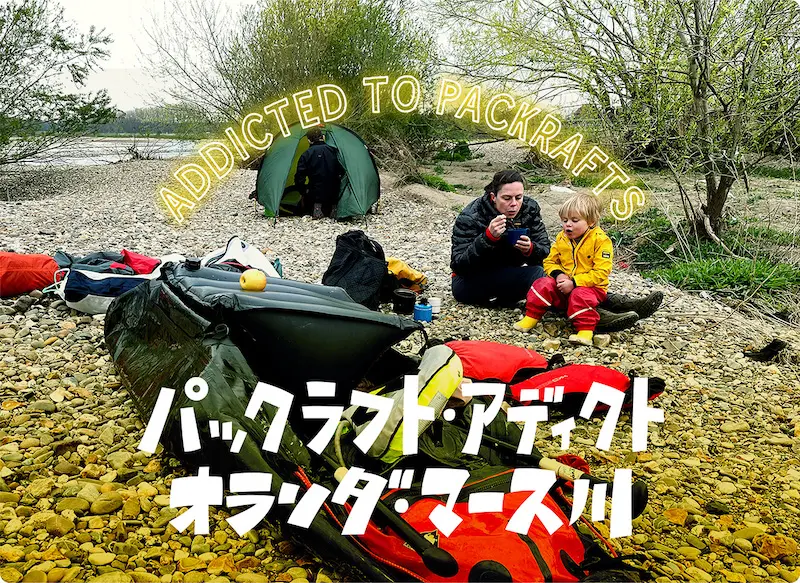
Packrafting and Camping Trip on the Grensmaas
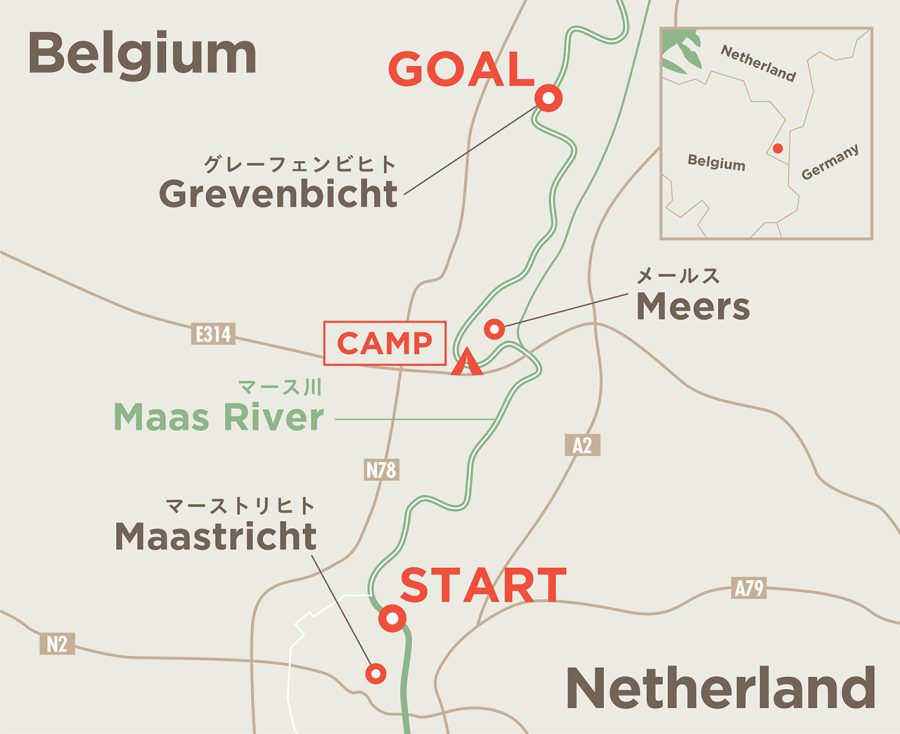
The borders are mostly closed, and the COVOD-19 restrictions are still in place. You can only travel abroad if it is a ‘necessity’. Even then you need to take tests (sometimes multiple) and go in self-isolation once you arrive at your destination, and then once more upon your arrival back home. This makes most trips abroad almost impossible.
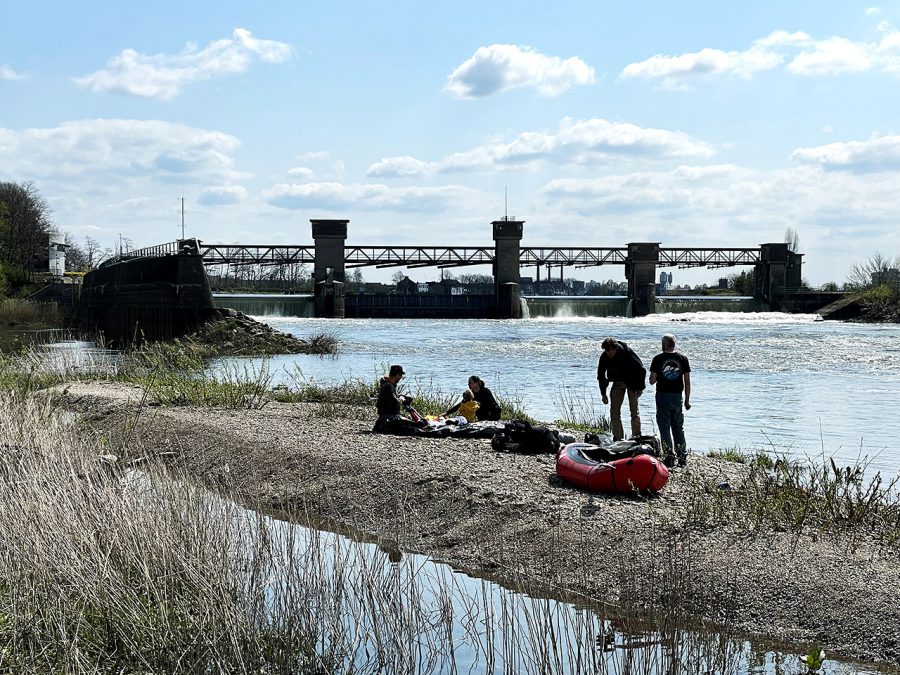
Luckily, we do not have a complete lockdown in the Netherlands and can still travel within the country. And this is exactly what we did. This April we travelled to the very South of the country for a two-day packraft camping trip on one of the border rivers, the Grensmaas.
The Grensmaas (I have already talked about it in one of my earlier articles) literally means the Border Meuse. The name comes from the fact that this 47-kilometre section of the Meus forms the border between the Netherlands and Belgium. The Meus itself is rather a large and broad river. It originates in France and flows through the whole of Belgium and part of the Netherlands on its way to the North Sea (its total length is around 925 km). For a large part of it, the river is navigable and is used by large boats.
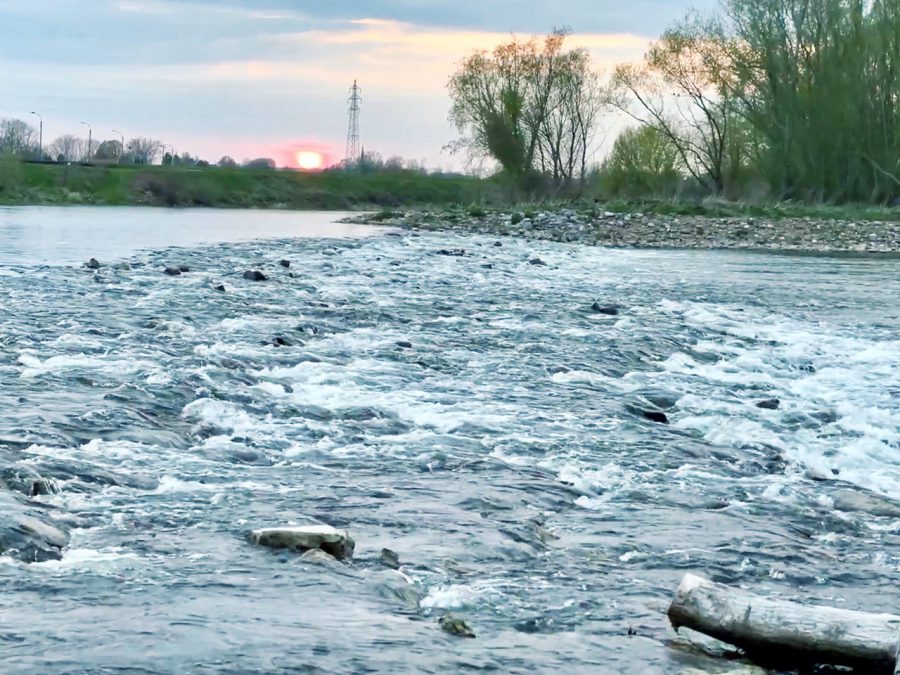
The Grensmaas section, however, is relatively shallow because most of the water is diverted to one of the two canals that were built in the 19th (Belgium) and 20th (the Netherlands) centuries. There are also some small rapids (Class I – I+) and the river preserved some of its ‘wild charm’ (as much as it is possible in this densely populated part of Europe). Another thing that makes it attractive is that, as the water level is controlled by dam releases, it is almost guaranteed that there is enough water. Nor are there any necessary permits or seasonal restrictions that one needs to consider to paddle there (unlike the Dinkel – please see my earlier article). All this makes it a safe choice for a paddling trip.
What we had in mind, however, was more than just a paddling trip. We also wanted to spend a night on one of the river islands. Besides the ‘usual suspects’ – Harold, Remi, Didier and I, this time the crew consisted also of Remi’s partner, Jacky, and their two-year-old son, Senn. Except for Didier, all of us had already paddled the Grensmaas before, though, in most cases those were just daytrips.
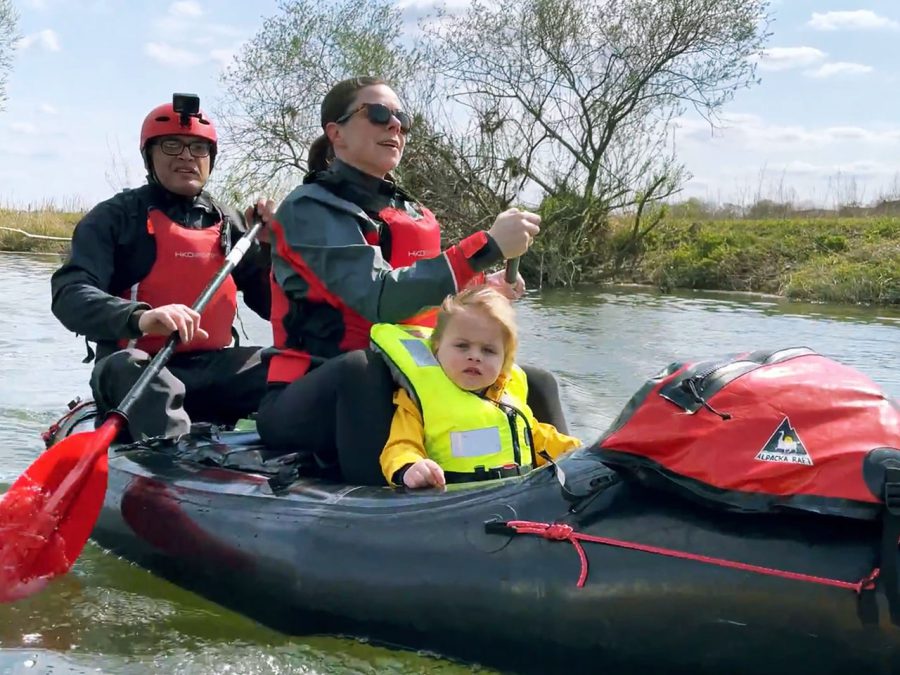
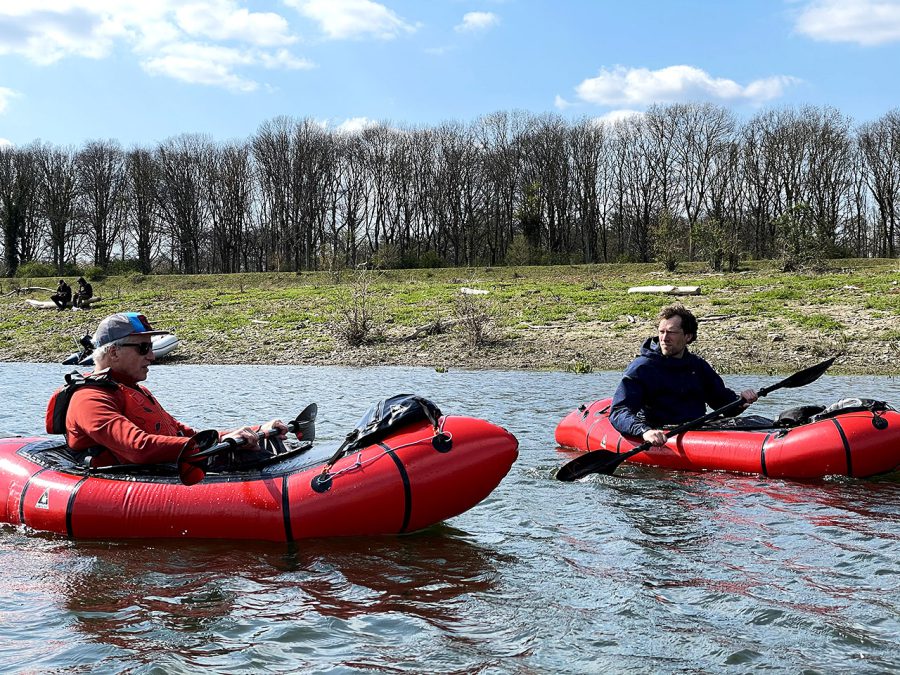
As we were travelling from different parts of the country again (Harold and I from the North, Didier from the West and only Remi, Jacky and Senn from the South), it was decided that we would leave one car at the takeout at the ferry crossing at Grevenbicht (temporarily closed due to COVID-19 travel restrictions) and drive with the other to the put-in just below the dam near Maastricht. When we arrived there (almost at 2 pm), we found a gravel bar – a perfect spot to inflate out packrafts.
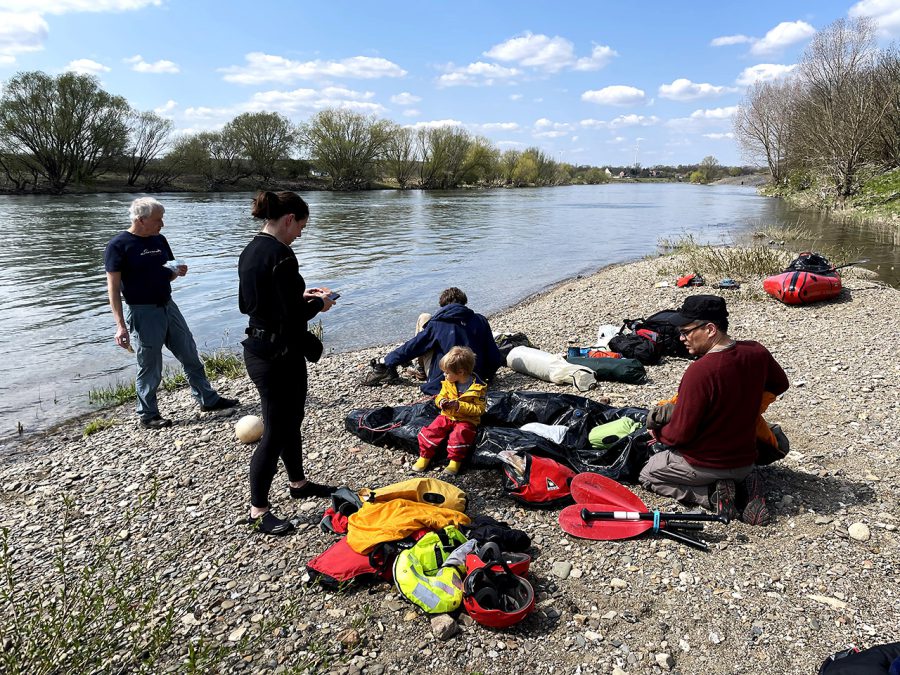
The plan for the day was to paddle around 16 kilometres to a place near Meers, where there are some islands in the middle of the Grensmaas. The weather seemed to be rather nice – it was sunny and relatively warm. It would have been almost perfect, if it were not for the northern headwind, which made it significantly more difficult to paddle. Still our progress was rather fast, and we covered that day’s distance in just over three hours.
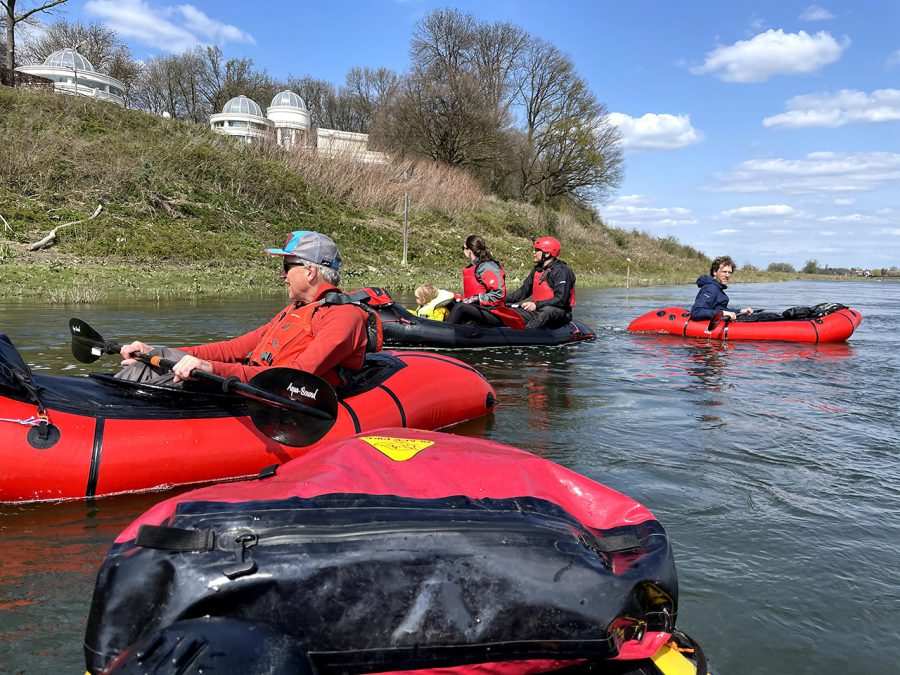
On the way, we managed to catch up a bit, talking about vaccination, our travel plans for the summer and more. Senn would observe the surroundings, while sitting quietly in the front of their packraft. “Look at the horses,” Jacky would draw the attention of her son to a team of horses grazing on the riverbank. Seeing how serene and meditative he was, Harold and I agreed that “Senn was zen”.
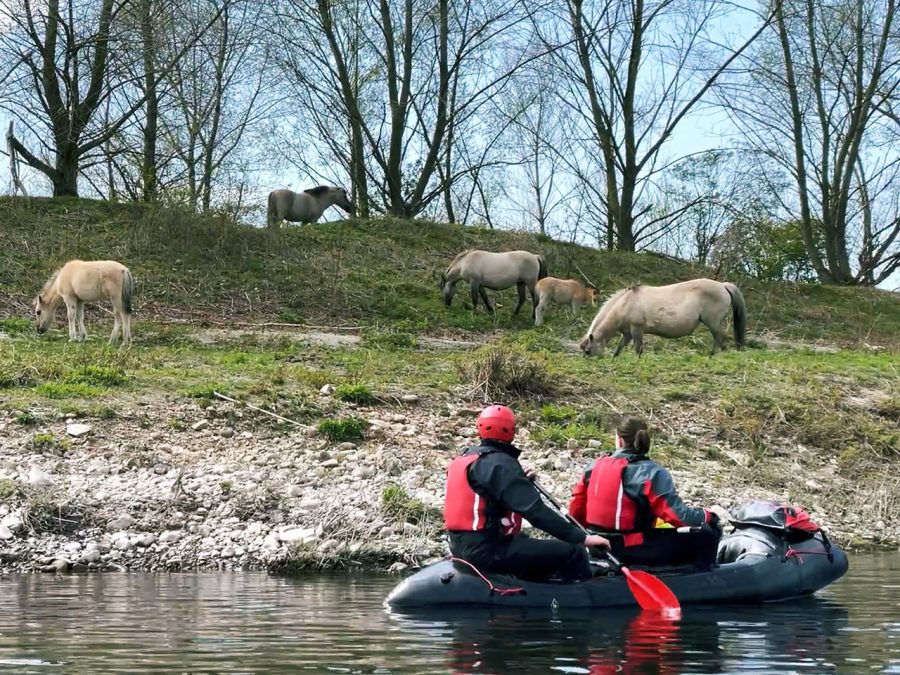
The islands that we were going for are located on the Dutch side of the river and are a very interesting place indeed. Here the Grensmaas makes a U-turn, with the inside bend being significantly lower than the outside. The islands run along the middle of the river and are linked by shallow rocky rapids that stretch lengthwise. These islands vary in size and permanency. Some of them are covered in trees, while other are mere gravel banks.
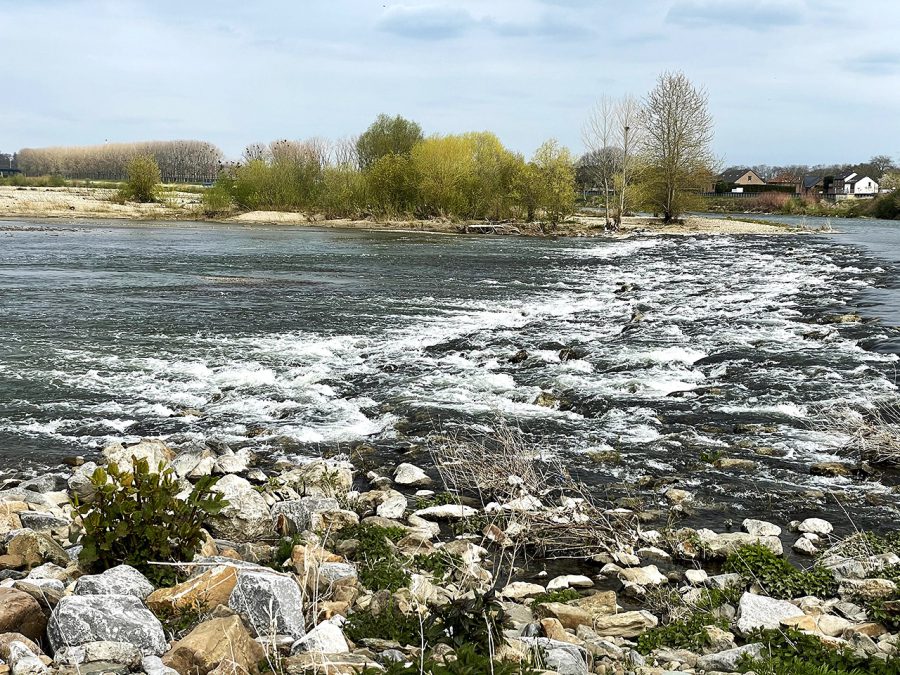
Our plan was to find a camping spot on the biggest one (this was also the island that I camped on during my first trip). However, when we arrived there, it turned out that most of the places were occupied by fishermen and their tents, who came there on motorboats. We could see their cars packed on the Belgian side of the river, just opposite the island. Moreover, any free place was full of rubbish left by its previous occupants. These were piles of old bottles, plastic packaging and tins. I think it must have been the dirtiest place in the Dutch outdoors that I had ever seen.
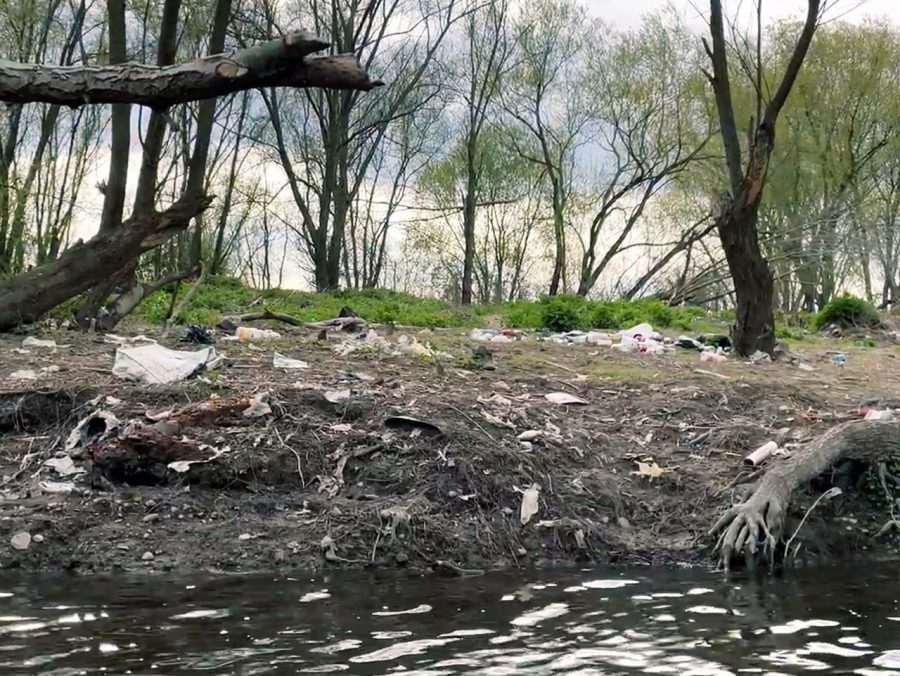
Disgusted by this mess, we decided to try our luck somewhere else and paddled to the shore on the Dutch side. However, this was not a good option either – the place was full of fallen trees (beavers did it!), muddy and full of footprints. A mooing sound from behind the trees made us realise that whoever left those tracks was still close by. That is why we decided to paddle a bit upstream to an island that we had passed by before. And that was definitely a good choice.
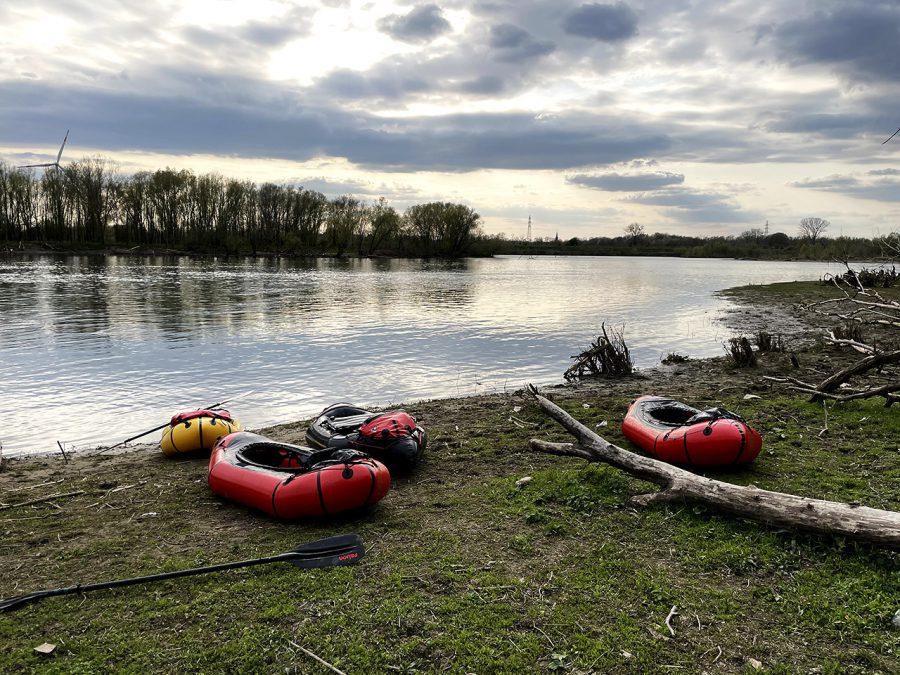
Though much smaller than the first island, it had some trees (very important for Didier as he had a hammock and tarp set-up). It also had plenty of dry driftwood, and while there was some rubbish around, it was clearly brough there by high waters. Having set up the camp (two tents, a hammock plus a tarp and a bivy), we started a fire and cooked our dinners.
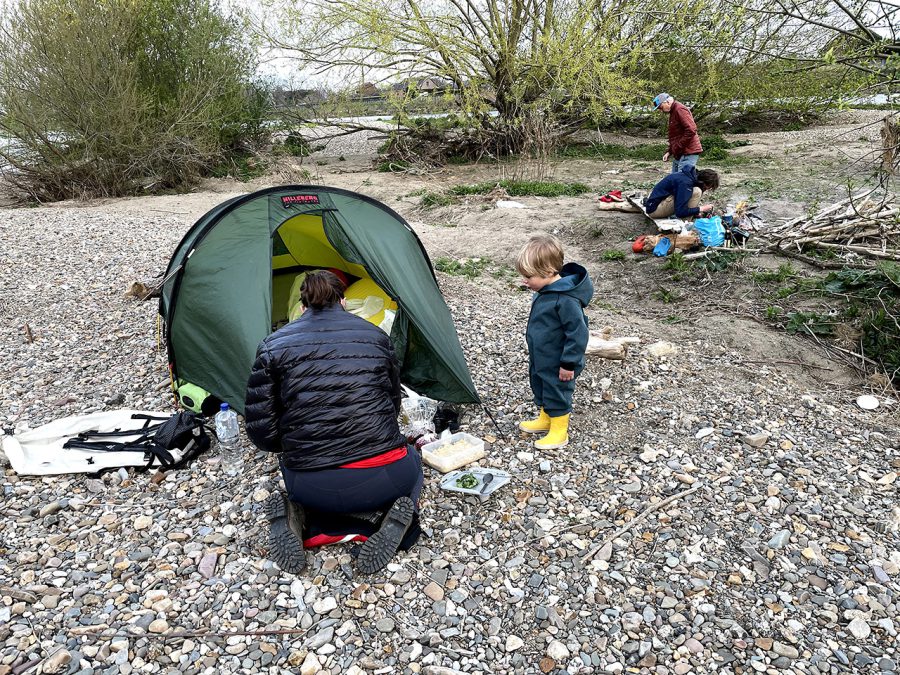
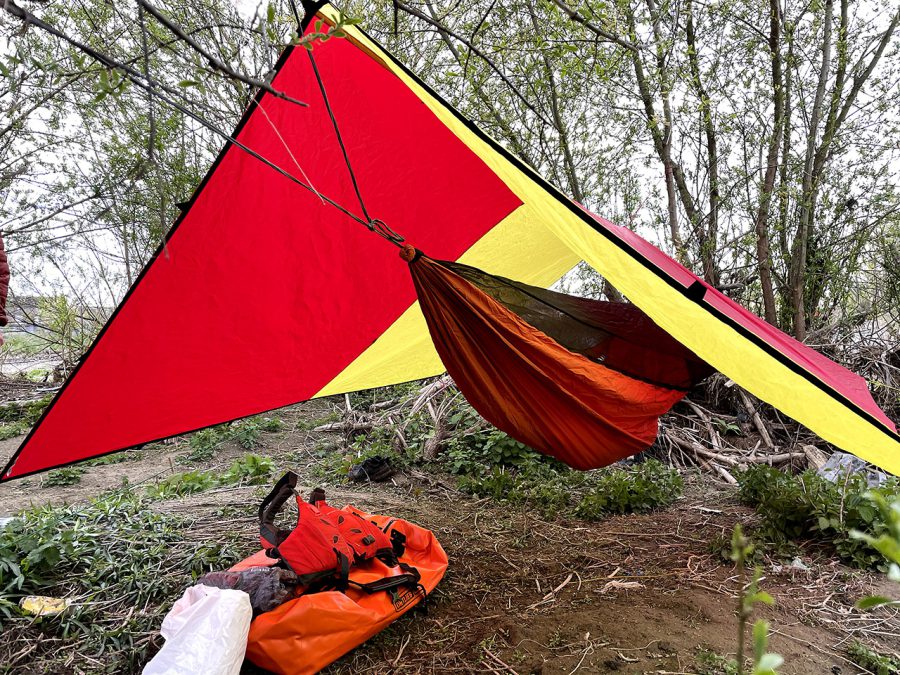
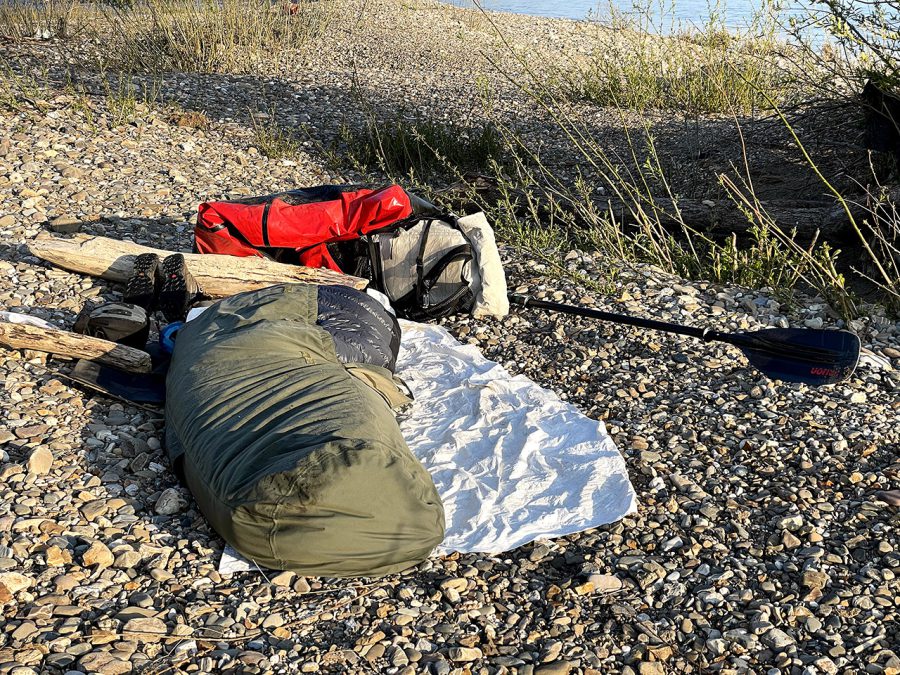
For this trip I specially brought my new Russian-made wood-burning stove that I had had for a year, but never had a chance to test – it worked really well. After the dinner, we were treated to a stunning sunset, while we set next to the fire talking and enjoying two types of Scotch whisky that Remi and Harold brough with them.
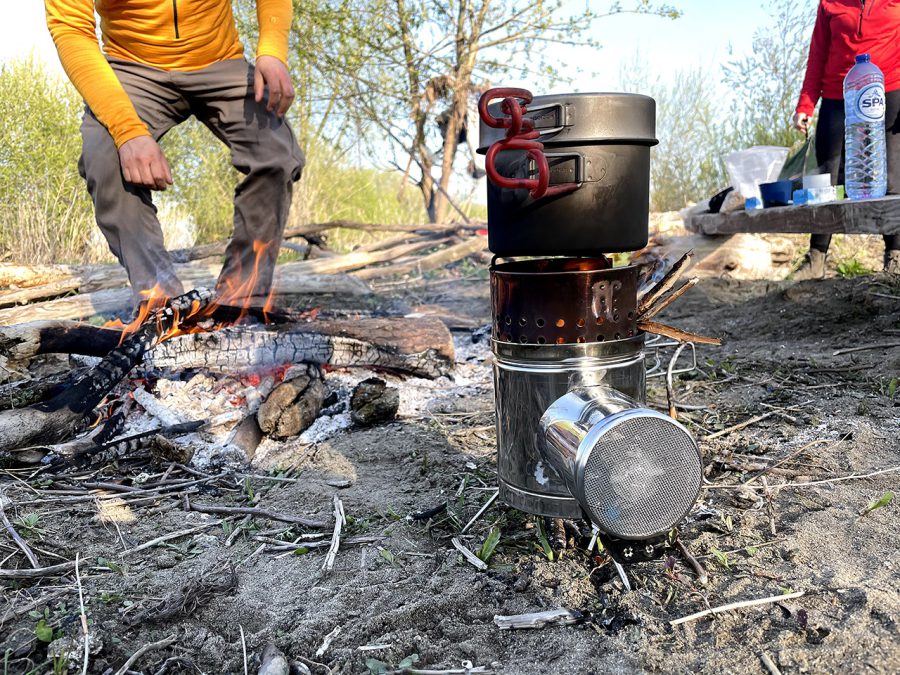
Accidentally, both were distilled in the same area, which was also the area where Didier’s ancestors came from. When I went to the river to rinse the dishes, I startled two beavers.
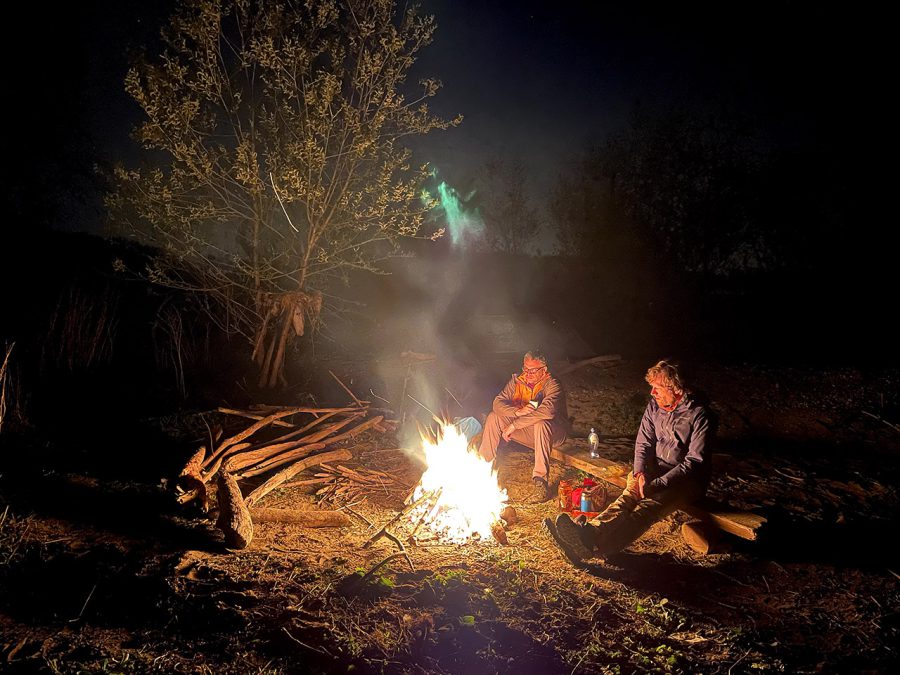
The next morning, Didier was the first one to wake up, while Harold slept in in his bivy. Remi restarted the fire and made some babyccino for Senn. Jacky took out a plastic bag with some dough for traditional Danish bonfire bread, which we tried to bake on sticks over the fire (I burned mine).
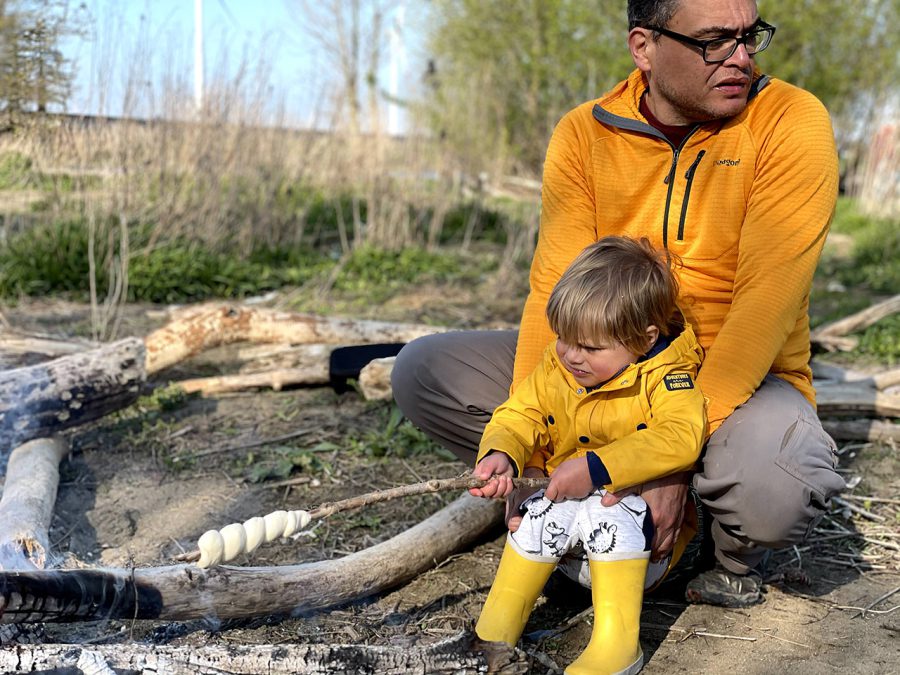
We took our time breaking up the camp and enjoying a sunny windless morning, which was why we left just before 11 am. Good thing we only had 12 km to paddle, which we did at a very leisurely pace. It also helped that most of the rapids were located at this section of the river, with the biggest one being between the big island we were originally planning to stay on and the Belgian side. (It seems that it is a well-known local paddling feature as we saw a fair number of kayakers practicing there.)
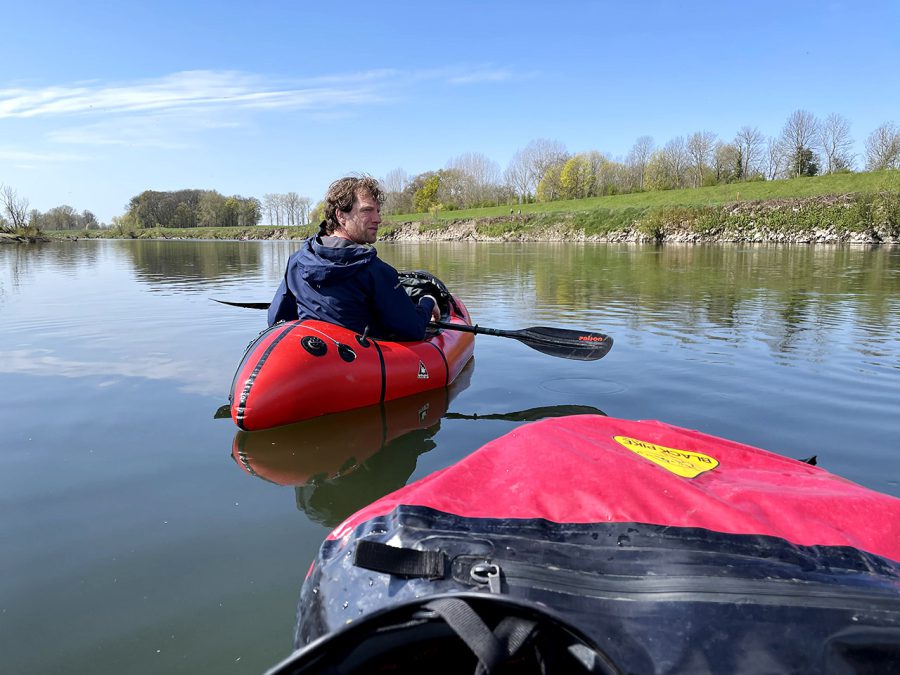
About halfway to the end point, we were forced to portage as the river was blocked by an operating ferry. It was cleverly designed so that it was swinging on the cables fixed upstream from it, which made it impossible to pass it on the water. Instead, we had to step out and carry our packrafts to a place below the ferry, and we had to do it on the Belgian side.
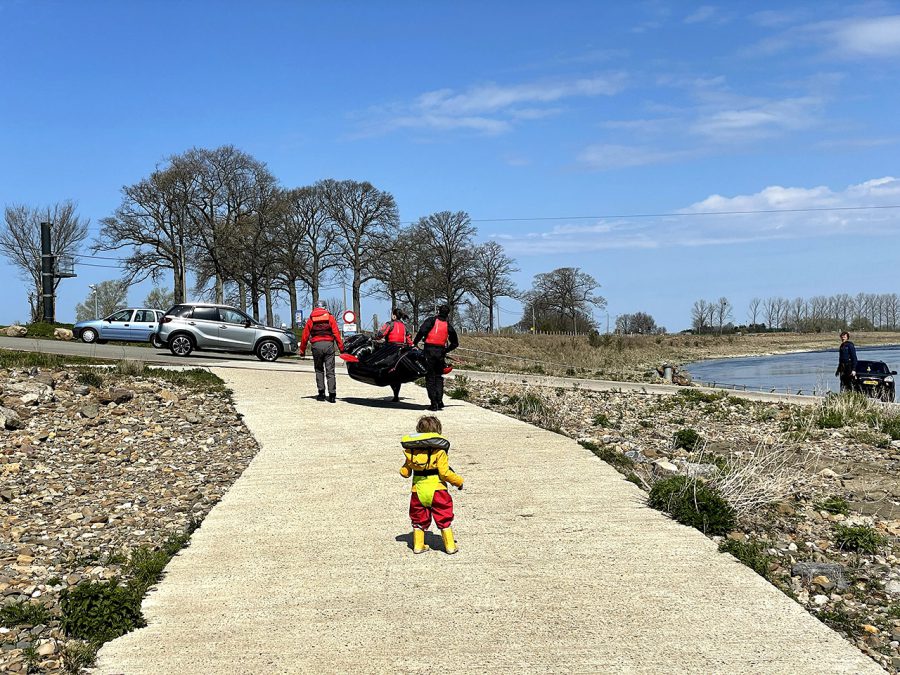
Thus, whether we wanted it or not, we had to break the COVID-19 restrictions and visit another country, which, in retrospect, might constitute as a “necessity.” At least we stayed in Belgium only for 40 minutes to have a lunch break. At the same time, every couple of minutes the ferry would carry a new load of hikers and cyclists on race bikes, most of whom did not look like they had a good reason to ‘travel abroad’.
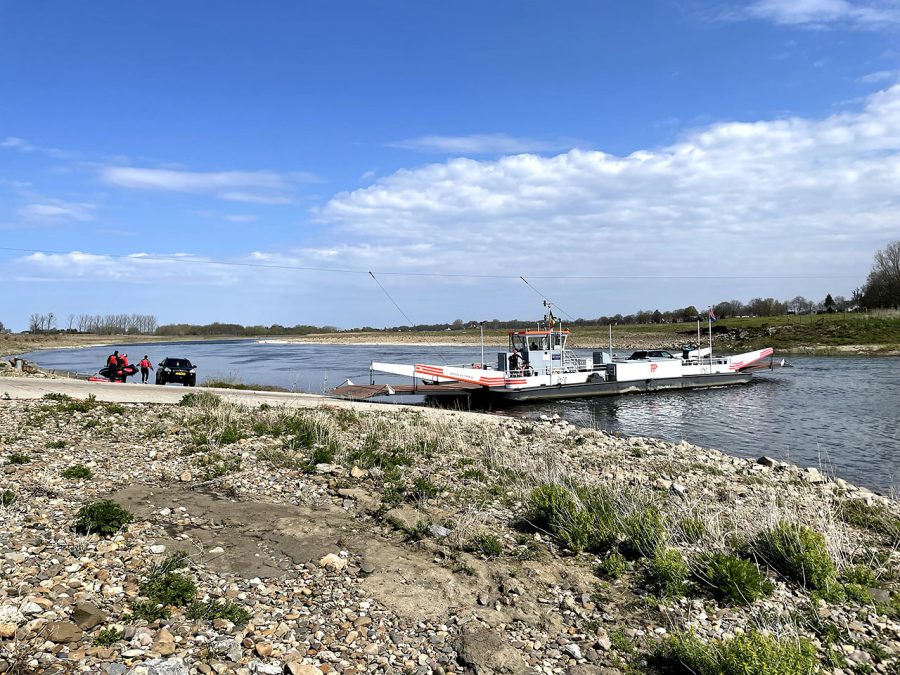
We reached the takeout spot just around 2 pm, almost exactly 24 hours after we started the trip. And while the river and the paddling were rather easy, the camping adventure definitely made it into something special. That and the feeling of being in a different country, regardless how short this ‘stay’ was. Hopefully, I will be able to go abroad for much longer than 40 minutes soon.
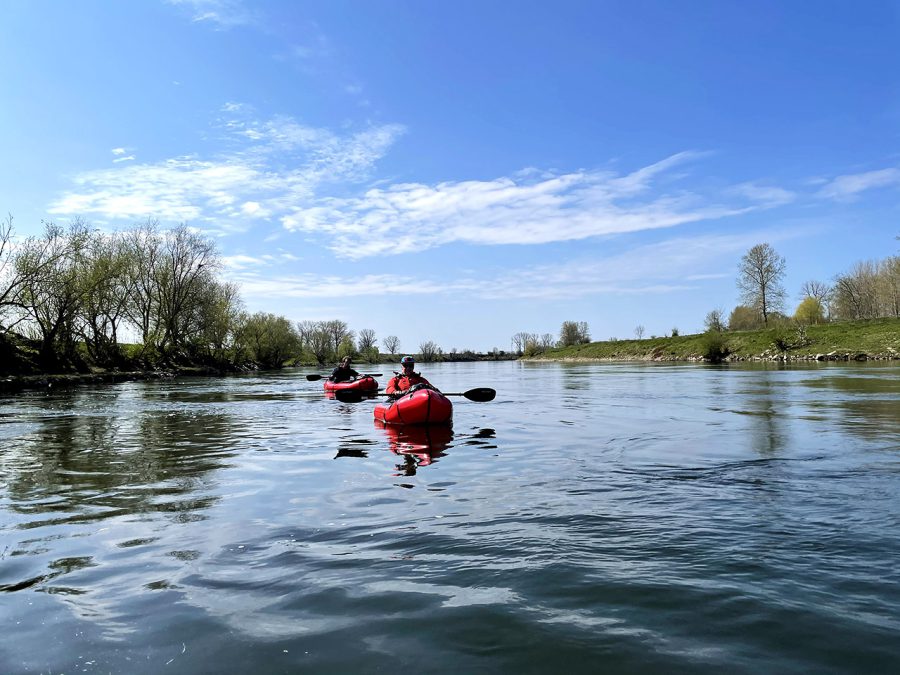
- « 前へ
- 2 / 2
- 次へ »
TAGS:

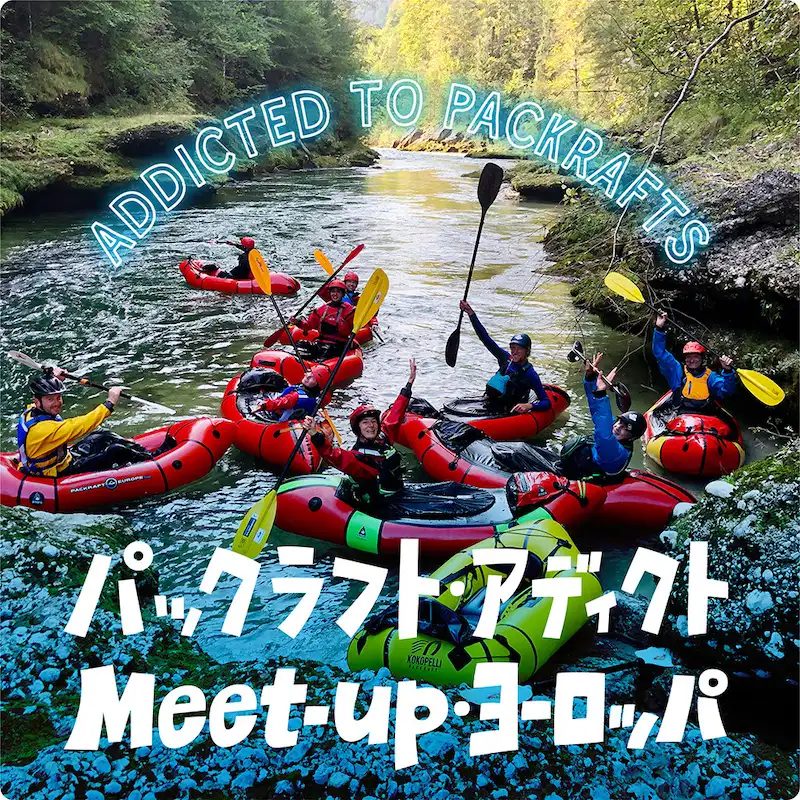
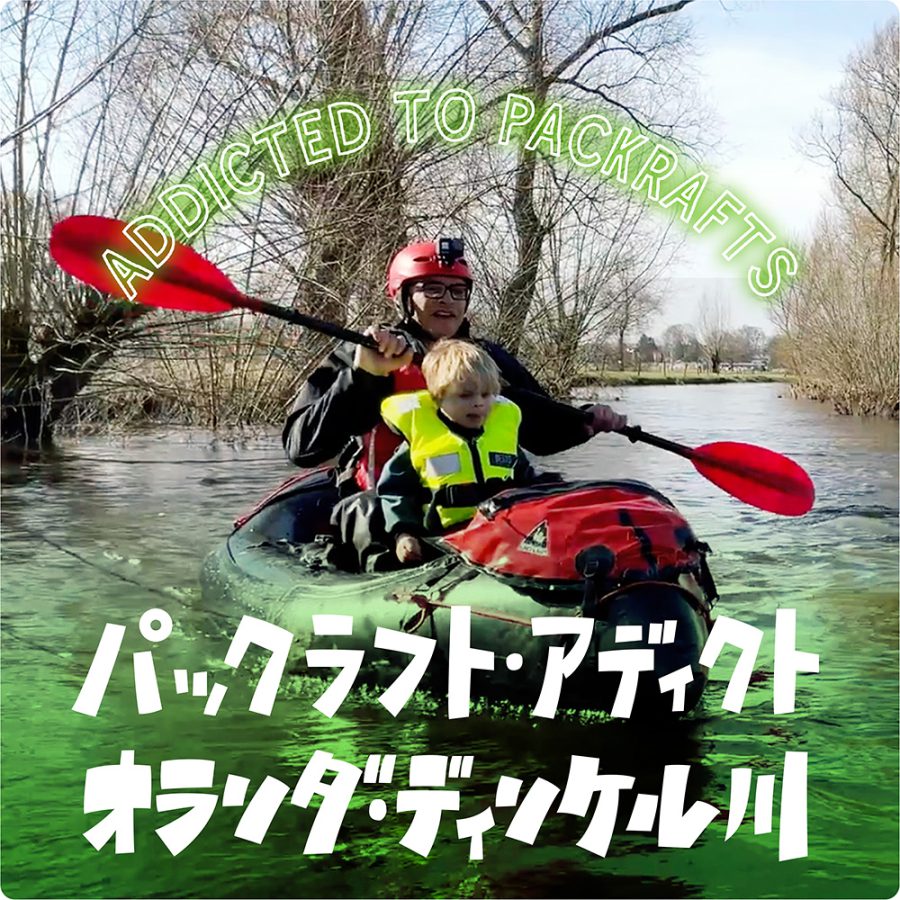
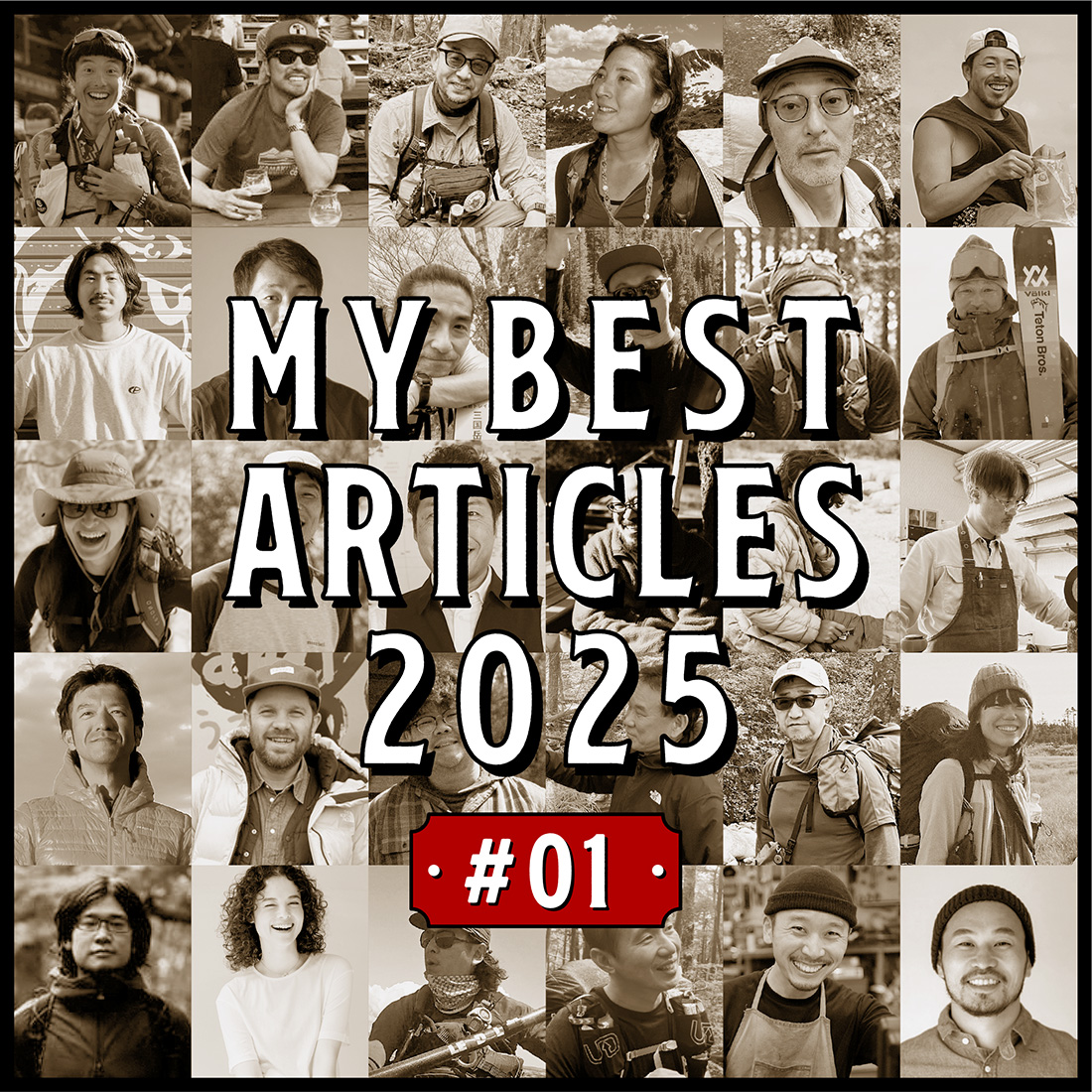
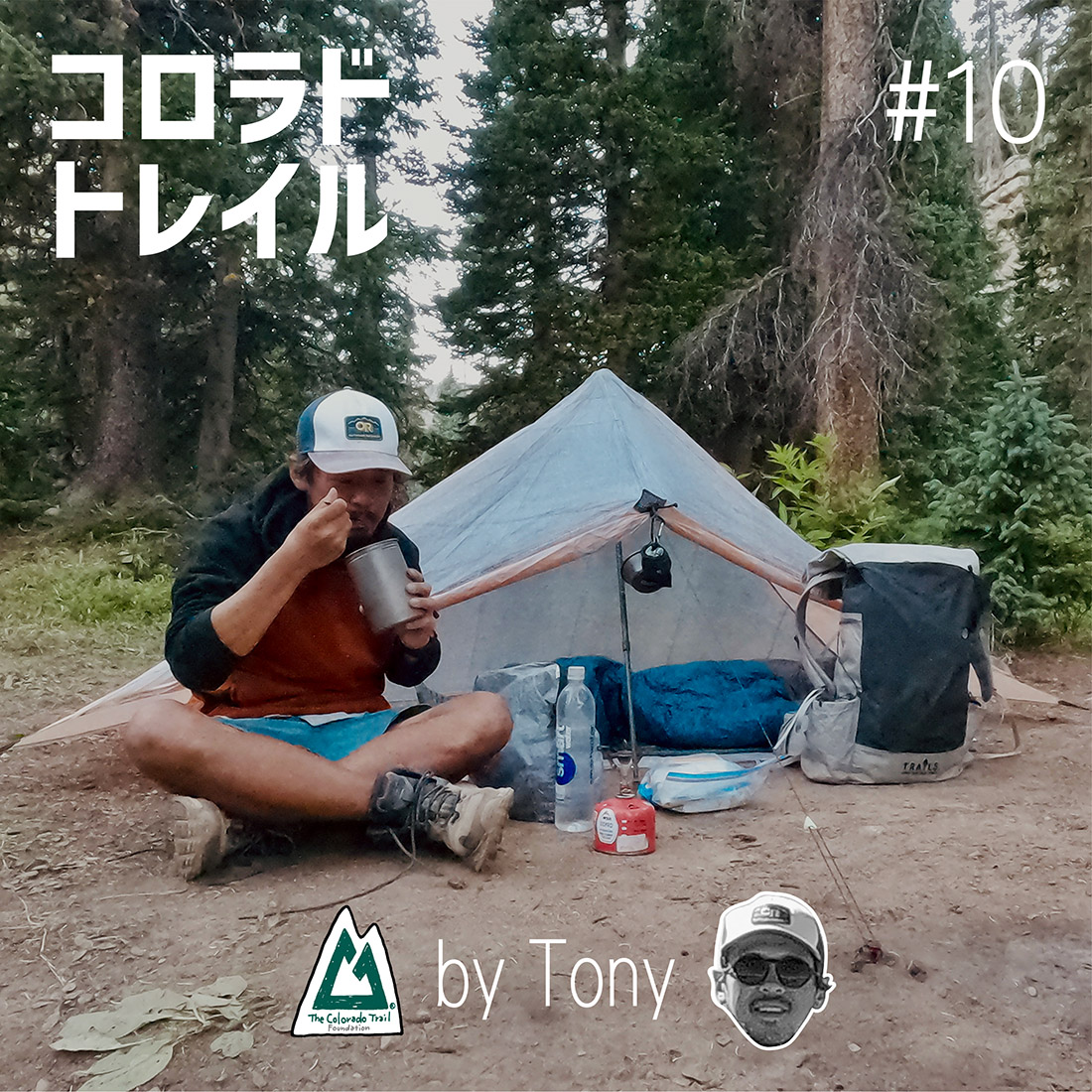
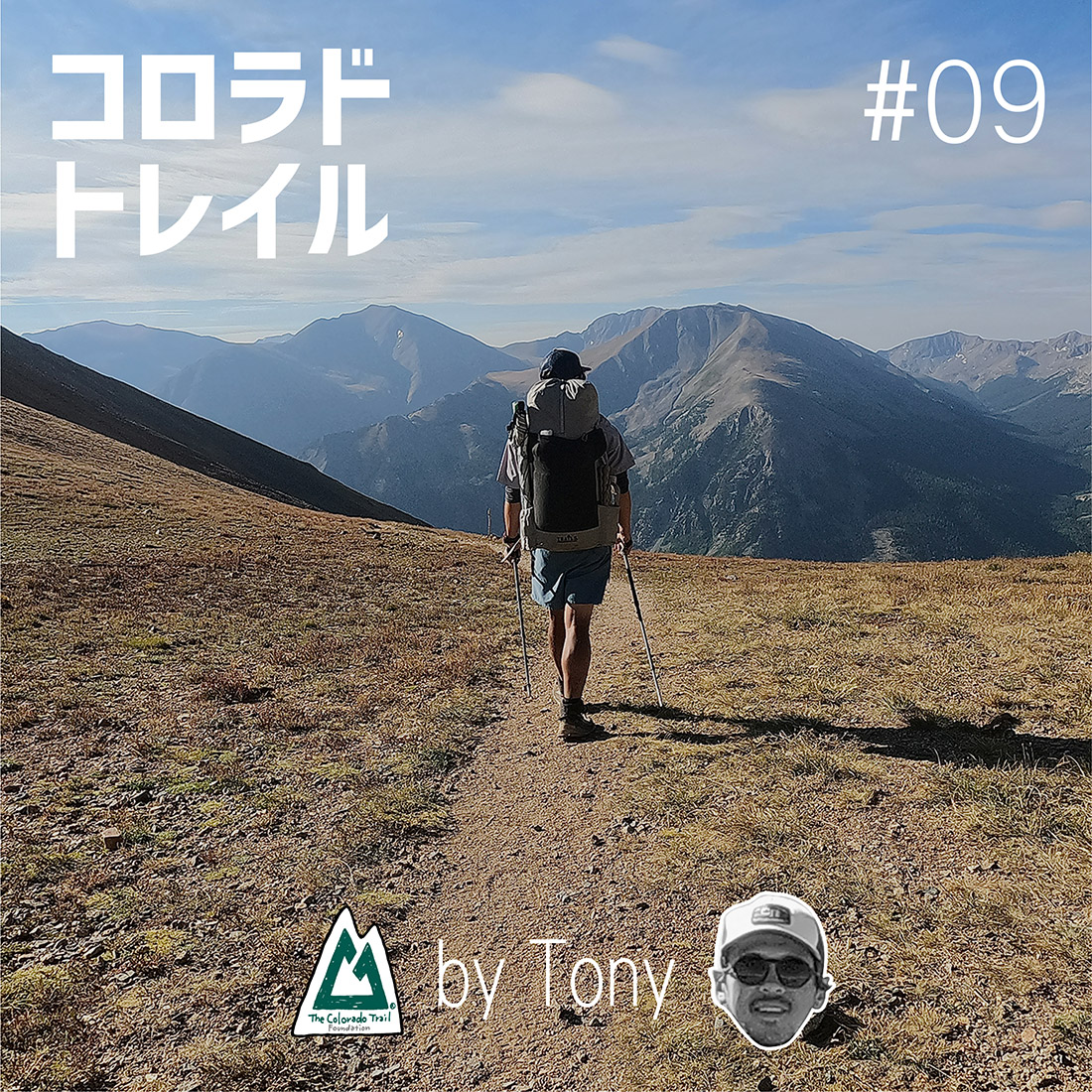







 ULギアを自作するための生地、プラパーツ、ジッパー…
ULギアを自作するための生地、プラパーツ、ジッパー…  ZimmerBuilt | TailWater P…
ZimmerBuilt | TailWater P…  ZimmerBuilt | PocketWater…
ZimmerBuilt | PocketWater…  ZimmerBuilt | DeadDrift P…
ZimmerBuilt | DeadDrift P…  ZimmerBuilt | Arrowood Ch…
ZimmerBuilt | Arrowood Ch…  ZimmerBuilt | SplitShot C…
ZimmerBuilt | SplitShot C…  ZimmerBuilt | Darter Pack…
ZimmerBuilt | Darter Pack…  ZimmerBuilt | QuickDraw (…
ZimmerBuilt | QuickDraw (…  ZimmerBuilt | Micro Pack …
ZimmerBuilt | Micro Pack … 














